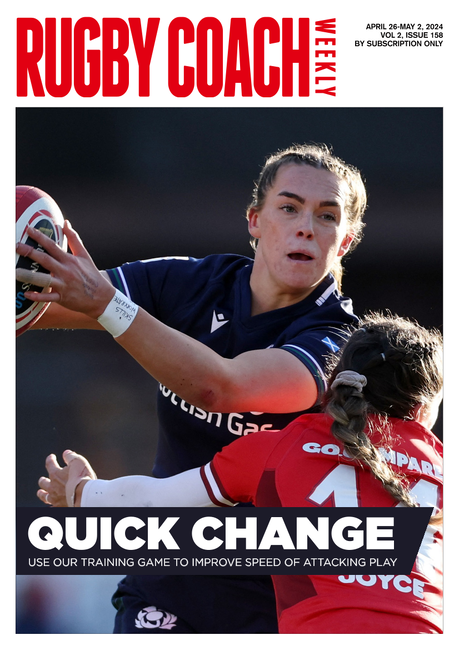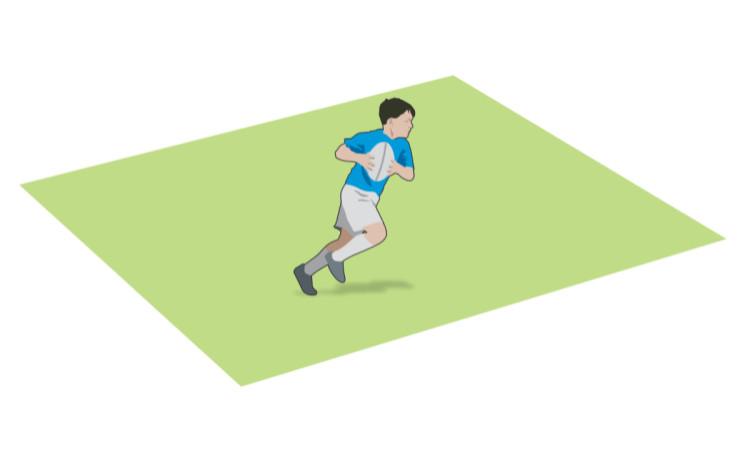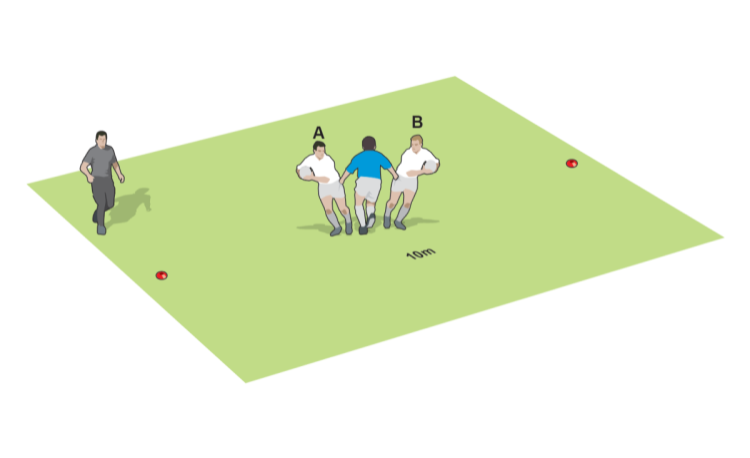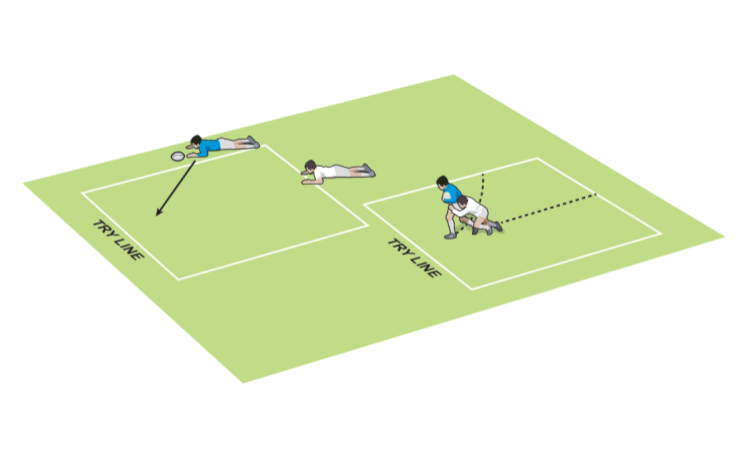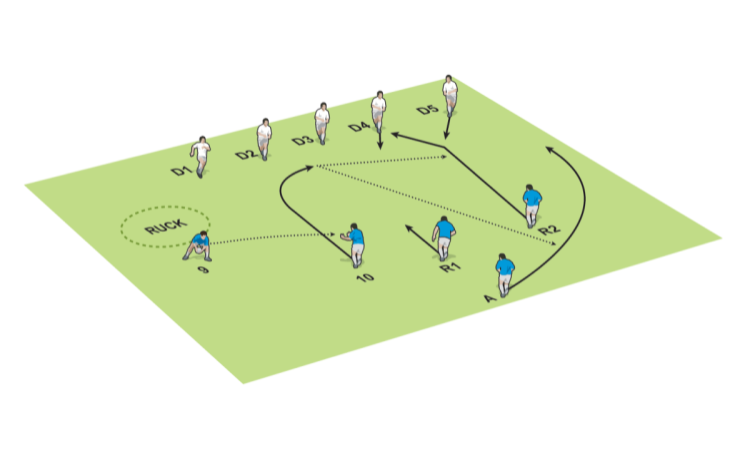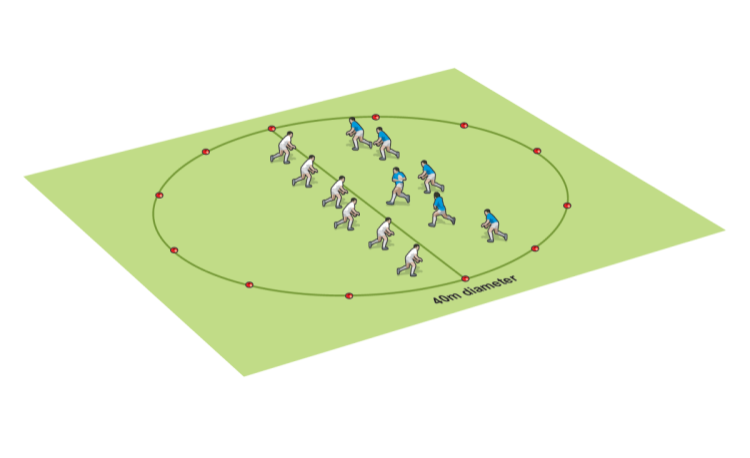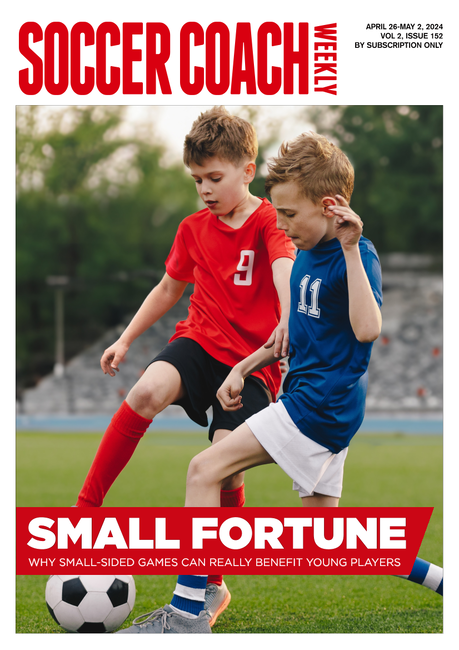You are viewing
1 of your 2 free articles
Essentials for the warm-up
Drills & Gamesby Dan Cottrell
One of the key influences you have on your team is in the hour or so before the match. Learn how to maximise that time to bring the best out of your players and get them flying from the first whistle.
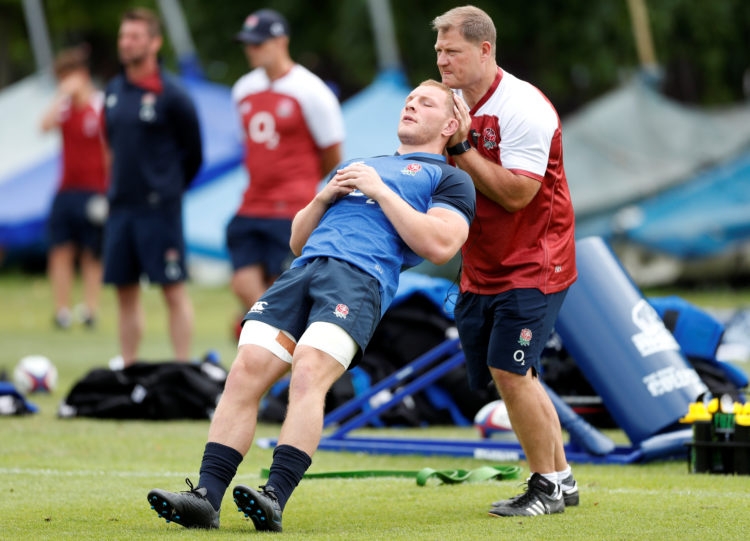
“You must open the motor-neural pathways for the game. That means running through the same body actions as the game, at close to the same speed,” says Chris Jones, a coach with extensive rugby experience but now national endurance coach for Athletics Ireland.
Olympic gold medallists from the pool or velodrome warm up with flat-out swims or cycle sprints. The brain and muscles are engaged together, activating them for competition.
Short bursts of activity are intense enough to burn off some anaerobic energy (the capacity to run fast for short distances) but not to dip too much into the aerobic energy levels. Rest and refuelling quickly returns the player to game readiness.
“Avoid too much low-level running, though,” adds Jones. “Look at the activities you’re doing in the warm-up and make sure players aren’t covering long distances.”
“I like to keep on-pitch warm-up time to a minimum,” says Huw Bevan, the Ospreys’ strength and conditioning coach before swapping sports to do the same role for the England cricket team. “About 30 minutes is enough time to get ready, with a mix of skills, functional warm-ups and run-throughs.”
You needn’t run through every aspect of the game plan before the match. “A couple of lineout plays and scrums, with some defensive organisation, should be ample to switch players on and reinforce themes from training,” says Bevan.


ACTIVATE THE MIND AND MUSCLES
“You must open the motor-neural pathways for the game. That means running through the same body actions as the game, at close to the same speed,” says Chris Jones, a coach with extensive rugby experience but now national endurance coach for Athletics Ireland.
Olympic gold medallists from the pool or velodrome warm up with flat-out swims or cycle sprints. The brain and muscles are engaged together, activating them for competition.
Short bursts of activity are intense enough to burn off some anaerobic energy (the capacity to run fast for short distances) but not to dip too much into the aerobic energy levels. Rest and refuelling quickly returns the player to game readiness.
“Avoid too much low-level running, though,” adds Jones. “Look at the activities you’re doing in the warm-up and make sure players aren’t covering long distances.”
KEEP IT SHORT AND FUNCTIONAL
“I like to keep on-pitch warm-up time to a minimum,” says Huw Bevan, the Ospreys’ strength and conditioning coach before swapping sports to do the same role for the England cricket team. “About 30 minutes is enough time to get ready, with a mix of skills, functional warm-ups and run-throughs.”
- Skills: players split into their units to work on areas like throwing in, lifting, kicking, clearance passing, catching the high ball, and box kicks.
- Functional stretching and exercises: this means going through the range of body movements that’s likely to happen in the game. It includes footwork, contact and passing. Increase the intensity.
- Run-throughs: this builds to game intensity and gets the players out of breath. Focus on a couple of key areas, such as attacking sequences and defensive patterns.
You needn’t run through every aspect of the game plan before the match. “A couple of lineout plays and scrums, with some defensive organisation, should be ample to switch players on and reinforce themes from training,” says Bevan.
OTHER WARM-UP TIPS
- If it’s raining, do as much as possible inside and then go out for the intense bursts. Players must get their minds right for playing in wet weather but shouldn’t get too cold. When they return to the changing rooms, they should change into dry kit for the start of the game.
- Keep individuals as part of the team. To an extent, every player has his own routine in the warm-up. Allow time for these players to prepare themselves, but make sure it doesn’t have a negative impact on other players or the team.
- Don’t look to “win” the warm-up. Whilst a psychological advantage can sometimes be gained in the warm-up by appearing organised and professional, focus on what’s required for your team to perform in the game. Concentrate on functional activities and monitor intensity and duration.

Newsletter Sign Up
Coaches Testimonials

Gerald Kearney, Downtown Las Vegas Soccer Club

Paul Butler, Florida, USA

Rick Shields, Springboro, USA

Tony Green, Pierrefonds Titans, Quebec, Canada
Subscribe Today
Be a more effective, more successful rugby coach
In a recent survey 89% of subscribers said Rugby Coach Weekly makes them more confident, 91% said Rugby Coach Weekly makes them a more effective coach and 93% said Rugby Coach Weekly makes them more inspired.
Get Weekly Inspiration
All the latest techniques and approaches
Rugby Coach Weekly offers proven and easy to use rugby drills, coaching sessions, practice plans, small-sided games, warm-ups, training tips and advice.
We've been at the cutting edge of rugby coaching since we launched in 2005, creating resources for the grassroots youth coach, following best practice from around the world and insights from the professional game.
More from us
© 2023 Rugby Coach Weekly
Part of Green Star Media Ltd. Company number: 3008779
We use cookies so we can provide you with the best online experience. By continuing to browse this site you are agreeing to our use of cookies. Click on the banner to find out more.


